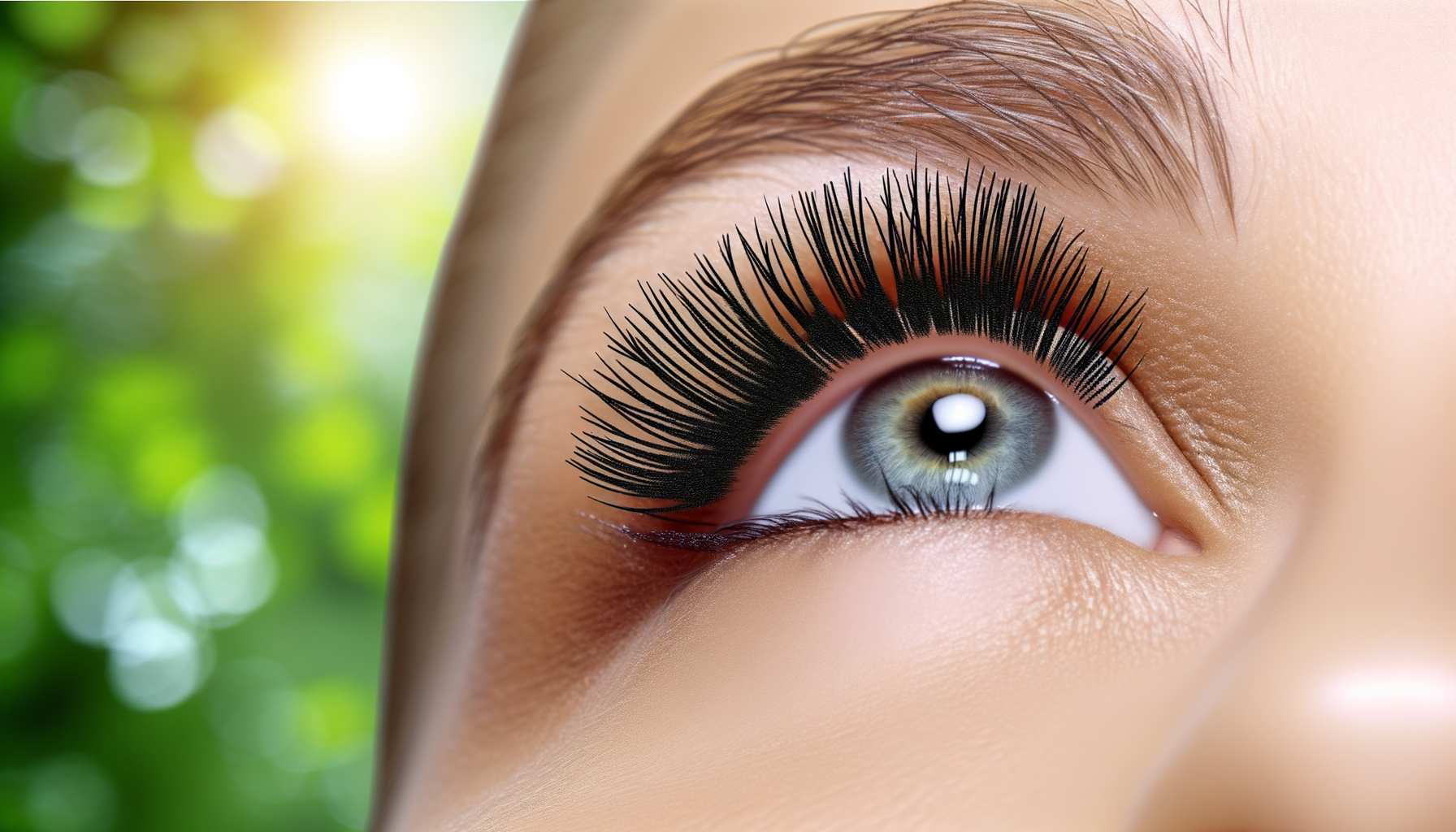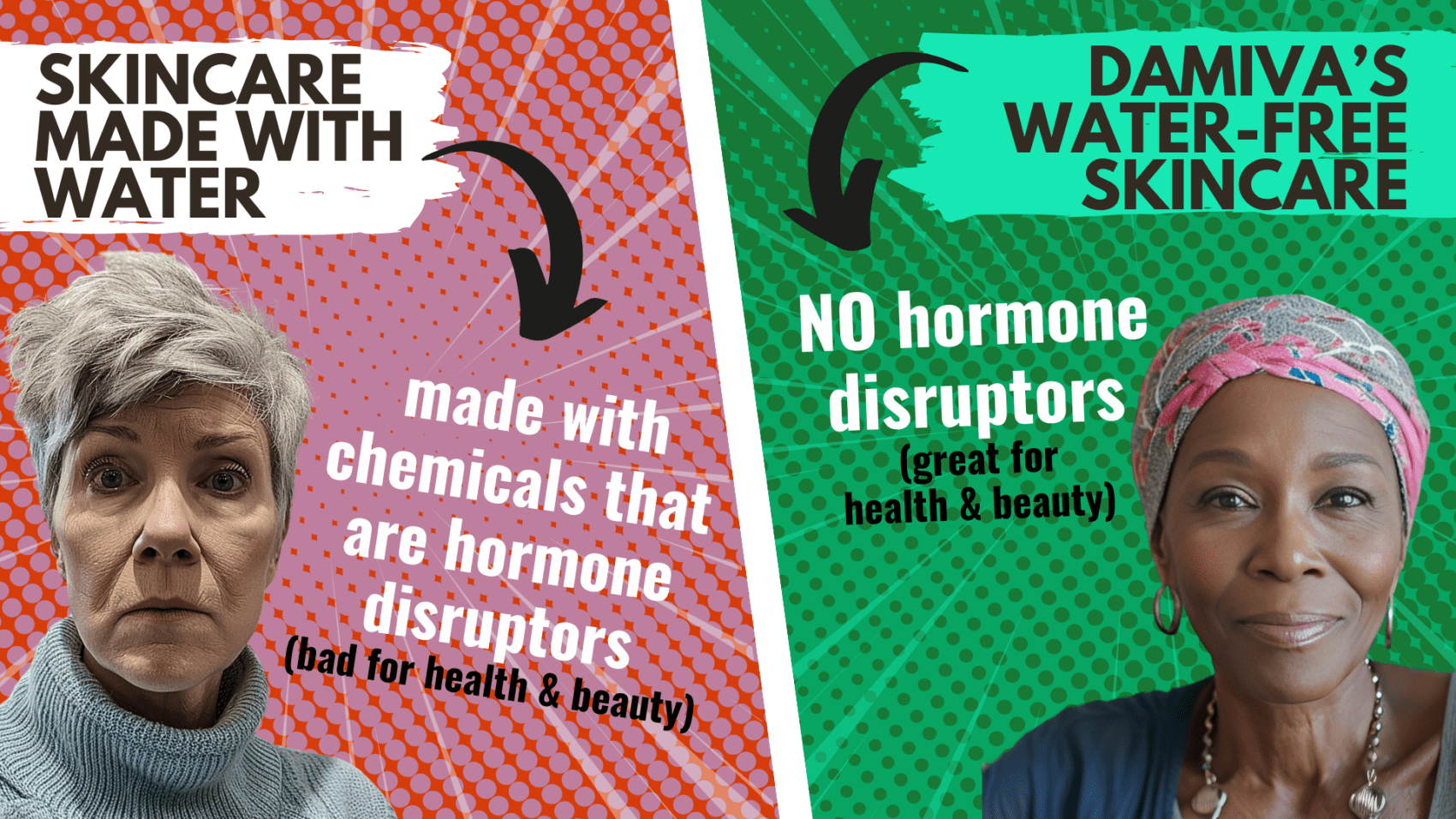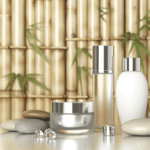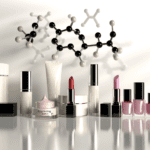Introduction
Overview of Mascara Usage
Mascara is a staple in beauty routines worldwide, with its origins tracing back to ancient civilizations. Today, it is used daily by millions to enhance the appearance of eyelashes, making them appear longer, thicker, and darker. The quest for captivating eyes has led to a plethora of mascara formulations, each promising a unique benefit, from volumizing to curling effects. However, the focus on aesthetic enhancement often overshadows the importance of ingredient safety, leading to potential health risks associated with long-term use.
Purpose of the Article
The purpose of this article is to delve into the safety of one of the most common pigments in mascara—carbon black. This ingredient is responsible for the deep black color that defines most mascara products. Despite its widespread use, there are growing concerns about the potential health risks associated with carbon black. This article aims to explore the scientific evidence surrounding these risks, regulatory perspectives, and consumer perceptions, ultimately guiding readers towards informed decisions about their cosmetic choices.
Importance of Understanding Cosmetic Ingredients
Understanding the ingredients in cosmetics is crucial for several reasons. Firstly, the skin around the eyes is particularly delicate and more permeable than other areas, making it susceptible to irritation and absorption of harmful substances. Secondly, the proximity to the eye means there is a risk of direct contact, which can lead to infections and allergic reactions. Moreover, certain ingredients in cosmetics, such as carbon black, have been linked to more serious health concerns, including hormonal imbalances, endocrine disruption, and even cancer. With the potential for long-term health implications, it is essential for consumers to be aware of what they are applying near their eyes. This knowledge empowers them to make safer choices and demand higher standards from the cosmetic industry.

Feeling You Have a Right to Safe Beauty & Fem Care?
If so, it may be time for a change. It starts with knowledge. We have a few suggestions in our new guides.
What is Carbon Black?
Definition and Properties
Carbon black is a material produced by the incomplete combustion of heavy petroleum products such as FCC tar, coal tar, ethylene cracking tar, and a small amount from vegetable oil. It is a black powder or granular substance that is widely used as a reinforcing filler in rubber and plastic products, as well as a pigment in inks, coatings, and plastics. Carbon black is known for its ability to absorb light and convert it into heat, which makes it an effective black pigment. Its high tinting strength and stability under exposure to light make it a popular choice for various applications, including mascara, where it provides the deep black color that consumers desire.
Historical Use in Cosmetics
The use of carbon black as a pigment dates back to ancient times when it was used to create the dark lines and shades in Egyptian tombs’ hieroglyphics. In cosmetics, carbon black has been used for centuries to darken eyelashes and enhance the eyes. Its use in mascara can be traced back to the early 20th century when the modern form of mascara was developed. The pigment’s intense black color and ability to adhere to lashes made it a staple ingredient in many mascara formulations.
Carbon Black vs. Alternative Pigments
While carbon black is favored for its strong pigmentation, there are concerns about its safety, leading to the exploration of alternative pigments. Iron oxides, for instance, are commonly used as a safer substitute, providing a range of brown to black shades. These alternatives are often perceived as more natural and are less likely to contain contaminants that could pose health risks. However, they may not always achieve the same depth of color that carbon black can provide.
Another alternative is fruit and vegetable-derived pigments, which are gaining popularity in the natural cosmetics market. These pigments are sourced from foods like blackberries, blueberries, and carrots, offering a spectrum of colors and the added benefit of antioxidants. While these natural pigments are considered safer and more environmentally friendly, they may not provide the same lasting wear or intensity as carbon black.
In the quest for safer cosmetic ingredients, the industry continues to innovate, developing synthetic dyes that are rigorously tested for safety. These dyes aim to match the performance of carbon black without the associated health concerns. As consumer awareness grows and regulations become stricter, the shift towards alternative pigments in mascara and other cosmetic products is likely to continue.

Popular Read: Endocrine Disruptors in Skincare: What You Need to Know
Potential Health Risks of Carbon Black
Research Findings on Carbon Black
Carbon black, a pigment used in mascaras to create a deep black color, has been scrutinized for its potential health risks. Research has indicated that carbon black can cause redness of the conjunctiva of the eyelids and has been linked to the development of cutaneous squamous cell carcinomas and skin papillomas. Studies involving workers exposed to carbon black by inhalation and dermal routes have shown an increased incidence of excessive dermal keratosis and leukoplakia, conditions that can predispose to cancer formation. The International Agency for Research on Cancer (IARC) has classified carbon black as a Group 2B carcinogen, indicating it is possibly carcinogenic to humans.
Link to Hormonal Imbalances and Endocrine Disruption
While specific research on carbon black’s direct effects on hormonal imbalances and endocrine disruption is limited, the concern arises from its association with polycyclic aromatic hydrocarbons (PAHs), which can be present as contaminants. PAHs are known to have endocrine-disrupting effects, which can lead to hormonal imbalances. Since carbon black can contain trace amounts of PAHs, there is a potential risk for similar endocrine-disrupting effects, warranting caution and further investigation.
Connection to Cancer Concerns
The connection between carbon black and cancer concerns primarily stems from its classification as a possible human carcinogen. The presence of PAHs as contaminants in carbon black raises additional concerns, as certain PAHs have been identified as carcinogenic. The evidence of carcinogenicity is based on animal studies where chronic exposure to carbon black has led to tumor formation. Epidemiological studies have also suggested a potential link between occupational exposure to carbon black and increased cancer risk, although human data is less conclusive.
Other Health Concerns
Beyond cancer risks, carbon black may pose other health concerns. It has been associated with respiratory issues in occupational settings, where inhalation of carbon black particles can lead to lung irritation and damage. Additionally, carbon black can contribute to environmental pollution, and its production process may release harmful substances into the air, potentially affecting broader public health. The cosmetic industry’s reliance on carbon black necessitates a careful assessment of these risks and the implementation of safety measures to protect consumers.

Do you have the most commonly used but toxic, disease bringing chemicals in your skin care? Many chemicals in skincare are hormone disruptors and make menopause symptoms worse.
Find out more…
Regulatory Perspective
FDA Regulations on Carbon Black in Cosmetics
The U.S. Food and Drug Administration (FDA) plays a crucial role in regulating color additives used in cosmetics, including carbon black. Under the Federal Food, Drug, and Cosmetic Act (FD&C Act), color additives must be approved by the FDA for their intended use before they are incorporated into cosmetic products. Carbon black, also known as D&C Black No. 2, is an FDA-approved color additive for use in cosmetics, but it must meet certain specifications and purity criteria. The FDA has set limits on impurities such as heavy metals and polycyclic aromatic hydrocarbons (PAHs) in carbon black to minimize potential health risks. Additionally, the FDA requires proper labeling of cosmetics containing color additives to inform consumers of their presence.
International Standards and Bans
Internationally, the regulation of carbon black in cosmetics varies by region. The European Union (EU), for example, has its own set of stringent regulations under Regulation (EC) No 1223/2009 on cosmetic products. In the EU, carbon black is listed as CI 77266 and is allowed as a colorant in cosmetics with certain restrictions on its use. However, the EU has banned the use of carbon black in products applied on the lips due to ingestion concerns. Other countries may have their own regulatory frameworks, with some adopting similar standards to the FDA or EU, while others may have more relaxed or stringent rules.
Industry Self-Regulation
Apart from government regulations, the cosmetic industry also engages in self-regulation to ensure the safety and quality of its products. Organizations such as the Personal Care Products Council (PCPC) and its subsidiary, the Cosmetic Ingredient Review (CIR), conduct independent reviews of cosmetic ingredients, including carbon black. The CIR provides safety assessments and recommendations based on scientific data, which manufacturers may voluntarily adhere to. Additionally, many cosmetic companies have their own internal safety standards and testing protocols that often exceed regulatory requirements to maintain consumer trust and product integrity.
In conclusion, while carbon black is widely used in mascara and other cosmetic products, its inclusion is subject to regulatory oversight aimed at ensuring consumer safety. The FDA, international regulatory bodies, and industry self-regulation work in tandem to monitor and manage the potential health risks associated with carbon black in cosmetics. Consumers are encouraged to stay informed and make choices that align with their health and safety concerns.
Do you know the 3 main ways how your body is exposed to harmful chemicals, which affect your hormones, your thyroid, health and beauty?
If not, it may be time to learn about them. It takes about 1-2 minutes.
We have a few suggestions how to avoid these silent health and immune system killers in our new guide.
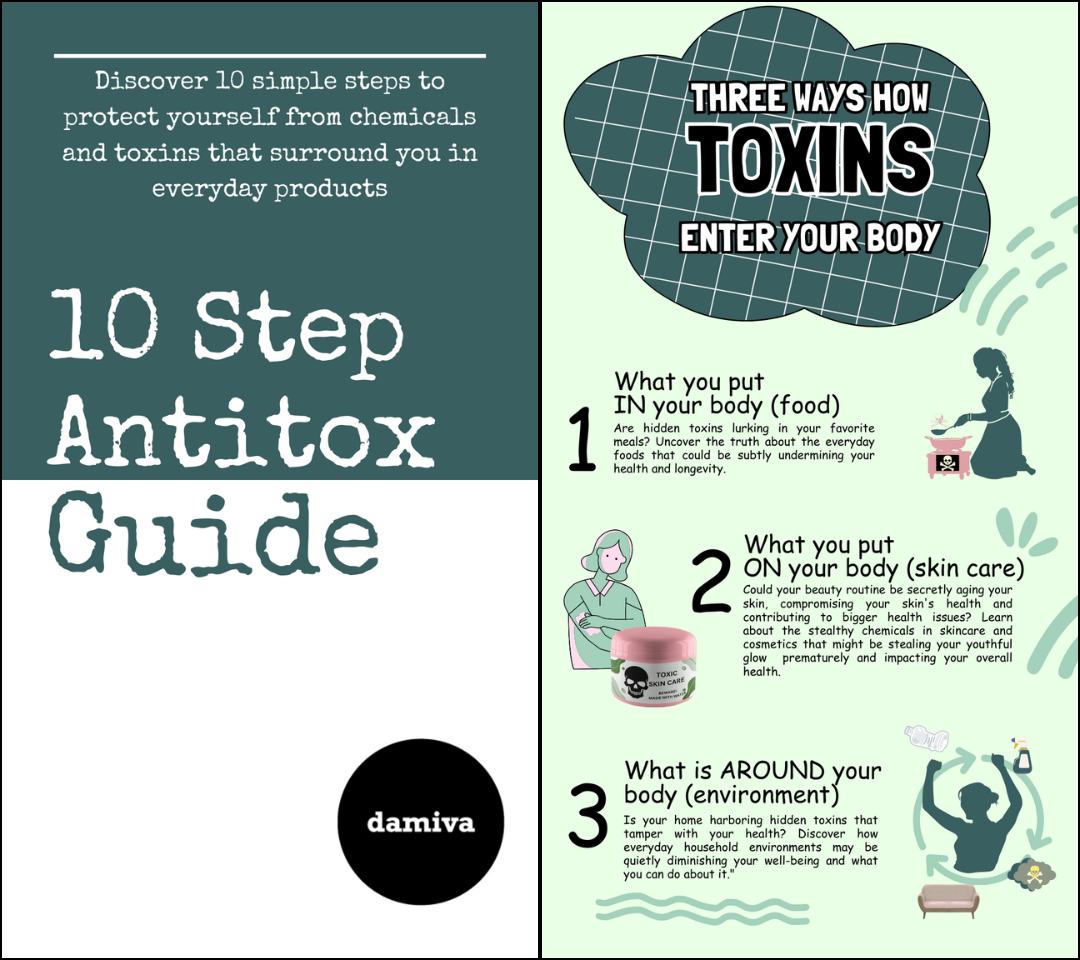
Consumer Awareness and Perception
Public Knowledge of Cosmetic Ingredients
When it comes to the ingredients in cosmetics, the general public’s knowledge can be quite varied. While some consumers meticulously scrutinize product labels, seeking to understand and research each component, a significant portion remains unaware or indifferent to the specifics of cosmetic formulations. This disparity in awareness is often influenced by factors such as education, interest in health and wellness, and exposure to information about cosmetic safety. Despite the availability of resources, the complexity of ingredient names and the sheer volume of information can be overwhelming for many, leading to a reliance on brand reputation or regulatory assurances rather than personal investigation.
Perceived Risks vs. Scientific Evidence
The perception of risk concerning cosmetic ingredients like carbon black often does not align with scientific evidence. Media reports and anecdotal accounts can sometimes create a heightened sense of danger, which may or may not be supported by rigorous research. For instance, while some studies have raised concerns about the potential health impacts of carbon black, the scientific community has not reached a consensus on its safety in mascara and other cosmetics. This discrepancy between perceived and actual risks can lead to confusion and mistrust among consumers, who must navigate conflicting information to make informed choices about the products they use.
The Role of Media and Influencers
Media and social influencers play a pivotal role in shaping consumer perceptions of cosmetic ingredients. Through blogs, videos, and social media posts, influencers can sway public opinion by endorsing or cautioning against certain products based on their ingredient lists. While some influencers are well-informed and base their recommendations on scientific evidence, others may spread misinformation or personal biases, which can contribute to misconceptions. The media’s tendency to sensationalize findings from new studies without providing context or further analysis can also lead to public misunderstanding. As a result, consumers are often left to discern the credibility of sources and the validity of claims on their own, which can be a daunting task in the digital age of information overload.
Natural and Safe Alternatives
Exploring Natural Pigments
As consumers become increasingly aware of the ingredients in their cosmetics, the demand for natural and safe alternatives to traditional mascara has risen. Natural pigments are derived from a variety of sources, including minerals, plants, and even fruits. These pigments provide the color we desire in our mascara without the potential health risks associated with synthetic dyes like carbon black. For instance, iron oxides are commonly used for creating rich browns and blacks, while ultramarines and chromium oxides offer vibrant blues and greens. Some brands have even innovated with fruit pigments from black tea, berries, and cocoa to offer a gentle, natural color to the lashes.
Benefits of Switching to Natural Mascara
Switching to natural mascara can have several benefits for both your health and the environment. Firstly, natural mascaras are often free from harsh chemicals and preservatives that can cause eye irritation and other adverse effects. They are typically rich in nourishing ingredients like natural oils and waxes, which condition and strengthen the lashes rather than causing them to become brittle and break. Additionally, natural mascaras are often environmentally friendly, with many brands offering sustainable packaging and ethical sourcing of ingredients. By choosing natural mascara, you’re not only protecting your health but also making a conscious choice to reduce your ecological footprint.
How to Identify Safe Mascara Products
Identifying safe mascara products can be a challenge, but there are several key factors to look for. Firstly, check for certifications such as EWG Verified or Made Safe, which indicate that the product avoids ingredients known to pose health risks. Look for organic certifications like USDA Organic or ECOCERT, which ensure that ingredients are sourced from organic farming. Additionally, cruelty-free and vegan certifications are important for ethical production practices.
When reading labels, avoid mascaras containing parabens, phthalates, fragrances, formaldehyde-releasing preservatives, propylene glycol, carbon black, and aluminum powder. Instead, opt for products with ingredients like natural waxes (carnauba, beeswax), natural oils (almond, argan), and mineral-based pigments. Lastly, consider using resources like the Environmental Working Group’s (EWG) database to research products and their ingredients.
Remember, while the term “chemical-free” is often used, it’s more accurate to seek out mascaras that are free from known harmful chemicals. Always double-check the ingredient list, and consider ophthalmologist-tested mascaras, especially if you have sensitive eyes or wear contact lenses. By doing so, you can enjoy the beauty-enhancing benefits of mascara without compromising your health.
Conclusion
Summary of Findings
The exploration of carbon black in mascara has revealed a complex interplay between cosmetic enhancement and potential health risks. Carbon black serves as a deep pigment, historically used to provide the dark color desirable in mascara. However, research findings have raised concerns about its safety, particularly due to its classification as a potentially carcinogenic substance. Studies have indicated that carbon black can cause redness of the conjunctiva, development of cutaneous squamous cell carcinomas, and skin papillomas. Regulatory perspectives vary, with the FDA providing guidelines for the safe use of carbon black in cosmetics, while international standards and industry self-regulation continue to evolve.
Empowering Consumer Choices
Consumers are increasingly aware of the ingredients in their cosmetics, and this awareness drives demand for safer products. Empowering consumers involves providing transparent information about the presence of carbon black and potential alternatives in mascara. Brands that prioritize consumer health and openly communicate their efforts to minimize risks are likely to gain consumer trust. Additionally, educating consumers on how to identify safe mascara products, such as looking for certifications and reading ingredient lists, is crucial.
Final Thoughts on Health and Beauty
The beauty industry must balance the aesthetic benefits of ingredients like carbon black with their health implications. While carbon black provides the desired color intensity in mascara, its potential health risks cannot be overlooked. The industry should continue to research and innovate, developing natural and safe alternatives that do not compromise consumer health. Ultimately, the goal is to offer products that enhance beauty while upholding the highest safety standards, thus ensuring that consumers do not have to choose between their health and their appearance.
